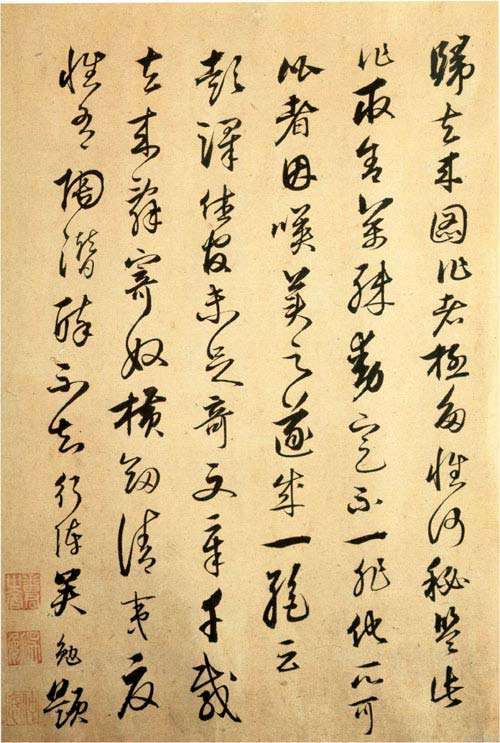There is no examination of Wu Mian's life. Judging from the style of calligraphy and the position of the inscription in his "Postscript to He Cheng Guizhuang Tujuan", it is estimated that he was born in the late Yuan and early Ming dynasties. The seals after the inscription are "Fanjun Shishang", "Wu Mian" and Zhongsi. Only according to his " It is speculated that Wu Mian may have been a merchant for generations, but he was quite culturally literate. During his interactions with literati, he was able to read this famous work and write it.
His books use a combination of round, square, and folded strokes, often with exposed edges, following the Jin and Tang Dynasties, and sometimes have Zhang Cao brushwork, which can also be seen as the influence of Zhao Mengfu and others. The writing is smooth and the whole article is written in one go. Although the author is unknown, his calligraphy still has reference value.

Wu Mian's "Postscript to He Cheng's Return to the Village" on paper, cursive script, 41 x 30 cm, collected by Jilin Provincial Museum
Explanation:
There are many authors of the pictures of Returning, but He Mijian chose this one. There are thousands of different movements, but none of them can be compared with others. Because of his admiration for the beauty, he became a masterpiece. Peng Ze retired from office, but it was not enough. His articles came and went over the past thousand years, and he sent slaves to create the Qing Yixia. Only intoxicated and drunk, I don’t know how to march. Wu Mian’s question








